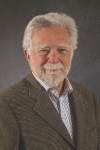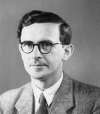A fascinating story of the discovery & development of biologicals for use in clinical medicine
- PMID: 30425216
- PMCID: PMC6251261
- DOI: 10.4103/ijmr.IJMR_1471_18
A fascinating story of the discovery & development of biologicals for use in clinical medicine
Abstract
A young physician starting a fresh career in medicine in this millennium would hardly stop to think about the genesis of a particular biological drug that he/she will be prescribing for a patient evaluated in the morning outpatient department. For him/her, this is now routine, and the question of 'Who', 'How' and 'When' about these biologicals would be the last thing on their mind. However, for those who came to the medical profession in the 1950s, 1960s and 1970s, these targeted drugs are nothing short of 'miracles'. It would be a fascinating story for the young doctor to learn about the long journey that the dedicated biomedical scientists of yesteryears took to reach the final destination of producing such wonder drugs. The story is much like an interesting novel, full of twists and turns, heart-breaking failures and glorious successes. The biologicals acting as 'targeted therapy' have not only changed the natural history of a large number of incurable/uncontrollable diseases but have also transformed the whole approach towards drug development. From the classical empirical process, there is now a complete shift towards understanding the disease pathobiology focusing on the dysregulated molecule(s), targeting them with greater precision and aiming for better results. Seminal advances in understanding the disease mechanism, development of remarkably effective new technologies, greater knowledge of the human genome and genetic medicine have all made it possible to reach the stage where artificially developed 'targeted' drugs are now therapeutically used in routine clinical medicine.
Keywords: Biological drugs; drug discovery; history of medicine; infliximab; monoclonal antibody; tumour necrosis factor-α.
Conflict of interest statement
None
Figures









References
-
- Silverstein AM. Emil von Behring: Infectious disease, immunology, serum therapy: Project MUSE, (review) Bull History Med. 2006;80:778–80.
-
- Avelar-Gonzalez FJ, Guerrero-Barrera AL. Cell culture: History, development and prospects. Int J Curr Res Acad Rev. 2014;2:188–200.
-
- Nicholas JS. Washington D.C.: National Academy of Sciences; 1961. Ross Granville Harrison 1870-1959 – A biographical memoir by biographical memoir.
-
- Ambrose CT. An amended history of tissue culture: Concerning Harrison, Burrows, Mall, and Carrel. J Med Biogr. 2016 Jan 01; 967772016685033. doi:10.1177/0967772016685033. - PubMed
Publication types
MeSH terms
Substances
LinkOut - more resources
Full Text Sources
